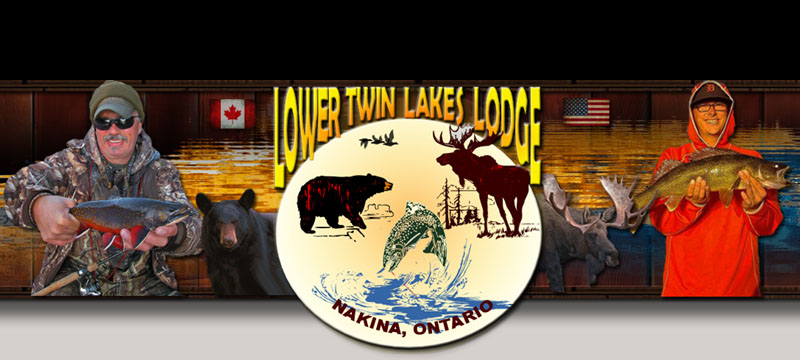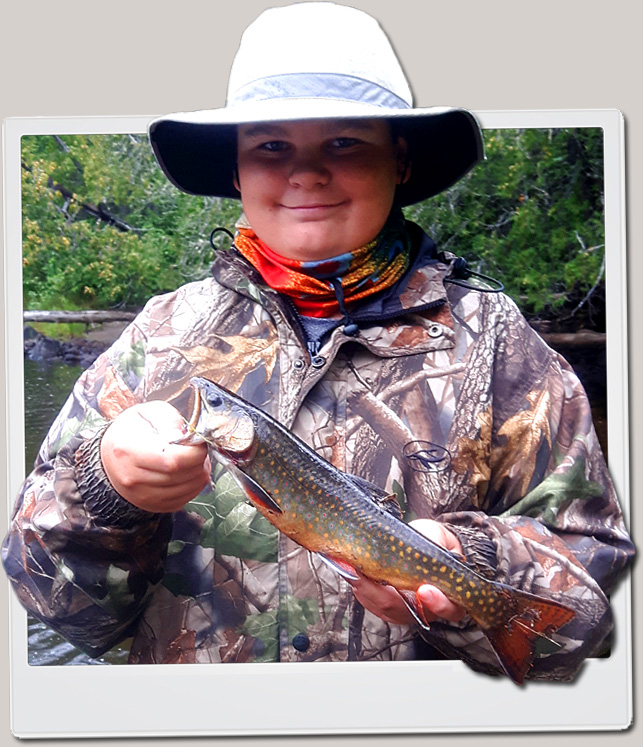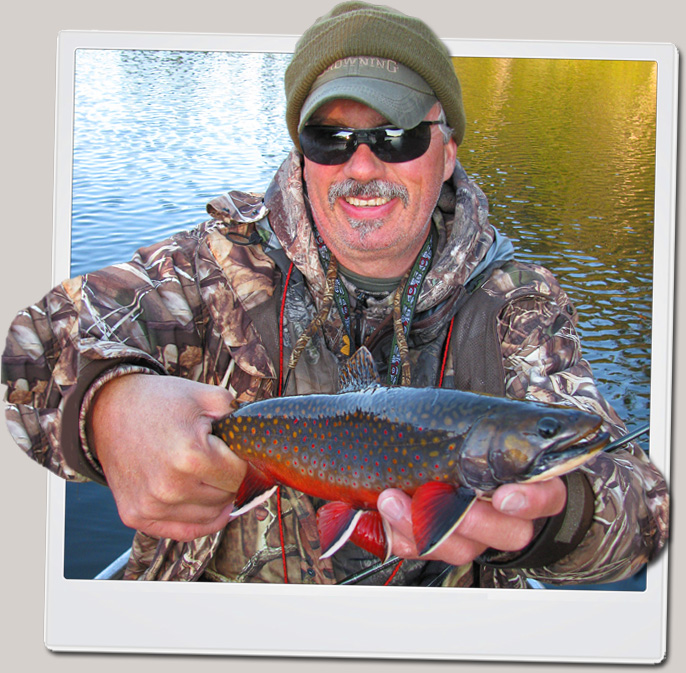


 Nakina is one of the top destinations in Ontario for Brook Trout Fishing. Brook Trout are also called Speckled Trout by many residents in Ontario; in case you were wondering what the difference was. There are Brook Trout in the Drowning River that runs through Upper and Lower Twin Lakes but it's very rare for them to come fare enough up stream to reach Lower Twin Lake. In the winter and spring the water is cold enough but oxygen levels are too low as there are no rapids in the river for a long way up from Upper Twin Lake. Way down river below Relief Lake there is awesome Brook Trout fishing below the first rapids in the spring. As the water warms up the Brookies take off down stream to spend the summer in deep pools where cold springs come into the river. The Brook Trout wait out the summer in the spots and can be very concentrated. Getting to these springs is a lot of work. We can confidently say there are no Brook Trout in Upper or Lower Twin Lakes. However, there are still many Brook Trout opportunities available within a 15 to 20 minute driving distance from the camp.
Nakina is one of the top destinations in Ontario for Brook Trout Fishing. Brook Trout are also called Speckled Trout by many residents in Ontario; in case you were wondering what the difference was. There are Brook Trout in the Drowning River that runs through Upper and Lower Twin Lakes but it's very rare for them to come fare enough up stream to reach Lower Twin Lake. In the winter and spring the water is cold enough but oxygen levels are too low as there are no rapids in the river for a long way up from Upper Twin Lake. Way down river below Relief Lake there is awesome Brook Trout fishing below the first rapids in the spring. As the water warms up the Brookies take off down stream to spend the summer in deep pools where cold springs come into the river. The Brook Trout wait out the summer in the spots and can be very concentrated. Getting to these springs is a lot of work. We can confidently say there are no Brook Trout in Upper or Lower Twin Lakes. However, there are still many Brook Trout opportunities available within a 15 to 20 minute driving distance from the camp.
New Trails: We traveled down these rivers and marked the best rapids and spring-fed holes where the Brook Trout are most concentrated. Then we did a lot of work cutting trails through the bush so that our guests could experience world class wild Brook Trout fishing. We have hidden trails to some of the hottest Brook Trout spots in Ontario.
River-fishing for Brook Trout in the Geraldton and Nakina area are in the Drowning River way down stream form Twin Lakes and the Squaw River. The trick is knowing where they are at what time of year. In the spring the Brook Trout generally travel up river and sit just below small lakes waiting for the May Fly hatch. If you get to these spots before the May Fly hatch you will get into some fantastic fishing.
The Brook Trout commonly range between 12 and 16 inches. There are some bigger ones. Guests have pulled 3 and 4 pound Brook Trout out of the Drowning River and the Squaw River. Once the May Flies start to hatch the trout gorge themselves and are a lot harder to catch. It's the same scenario on the Squaw River. After the May Fly hatch the water in the rivers warms up so all the Brook Trout migrate to where cold springs run into the rivers. Fortunately for our guests we know where these cold springs are and have even cleared trails through the bush for easier access. It's always a good idea to take a canoe because the Brook Trout will be in an area where there are multiple springs running into the river so they may be spread out and in different pools.
The Brook Trout spend the whole summer in these areas and generally are very hungry. They are also very sensitive to sounds and movement so it's best to be very stealthy and wear dark natural colors like black, dark brown or dark green and always approach the pools from down stream. Some guests wear camouflage when river fishing for Brookies.

Spidering through the bush are old abandoned logging roads and ATV trails that will bring you to a number of spring-fed lakes and even lakes with artesian wells that have been stocked with Brook Trout by our Ministry of Natural Resources.
You are not allowed to have gas motors on these lakes so a canoe will maximize your success. In the spring you can cast from shore or from your canoe and catch Brookies close to the surface. Later in the summer the Brook Trout will be down 25 to 35 feet deep during the day so you will need to quietly troll deep with 6 pound test line and a 3-way swivel rig or any other light action deep-water rig. In the evening the trout come up to the surface for insects so fly-fishing is an excellent way to get them. They only come up to the surface in areas where they can get back to deep cold water quickly so in the summer they will not be near the shore. The majority of the Brook Trout in these lakes will be smaller than in the rivers. However, the biggest Brook Trout in the lakes have been known to exceed 5 pounds. Most trout that are caught are in the 1/2 to 2 pound range.
Brook Trout bite the best on bright sunny days with high pressure. They like tiny lures such as Blue Fox Spinners, Panther Martins or even tiny Rapalas. They seem to like copper or black with yellow dots on some days and other days they like bright colors like orange, chartreuse or pink. In the rivers the trout will not always be aggressive enough to hit lures. Sometimes casting lures can even spook the trout. You should bring some small trout hooks and some worms and just let the worm swirl around in the deeper water in the back of pools or let the worm flow into the pools from up stream. Guests who want to spend a week or a day Brook Trout fishing will be given the location of these hot spots or guided into these areas.
Click Here to find out how to make and use a deep-water light-tackle 3-way swivel trout rig